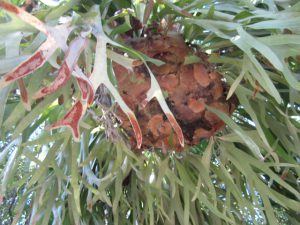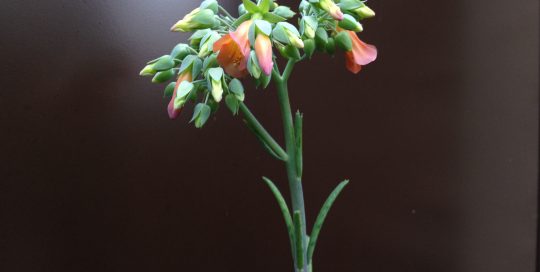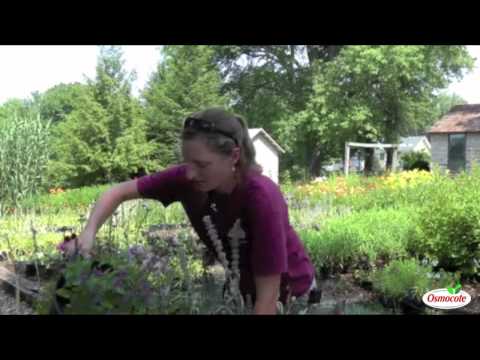Staghorn Ferns
Views: 9227

Staghorn ferns are one of the weirdest looking plants out there. They are often available artfully mounted on a piece of wood. So not only are they a fun addition for any houseplant collector, but function nicely as home décor as well. Or, if you happen to be lucky enough to live in a climate zone where temperatures never dip below freezing, they are a fun addition to the outdoor garden. They can be mounted on walls, trees*, rocks, or grown in a hanging basket.
Staghorn ferns are epiphytes that belong to the Polypodiaceae family. They’re native to many tropical regions of the world. Epiphytes are plants that absorb moisture and nutrients through the air and rain. Therefore, they don’t need to be rooted in soil to thrive.
Staghorns produce two different types of fronds (i.e. leaves), basal and foliar. The basal fronds, sometimes called sterile fronds, grow in overlapping layers that grip whatever surface the plant is growing on. The upright basal fronds are especially important since they are angled to collect rainwater and bits of plant debris that provide nutrients for growth. Foliar fronds, also called fertile fronds, grow erect or pendulous from the basal fronds and are either lobed or strap-shaped. It depends on the variety. Brownish spores are produced on the underside of foliar fronds in structures called sporangia. Don’t freak out if parts of the leaf turn brown. This is likely just part of the plant’s reproductive cycle.
Mounting and caring for staghorn ferns
To mount a staghorn fern, simply place a handful of peat or sphagnum moss (adding some potting soil or compost if fine too) where you want the fern to grow. Then place the plant over the growing medium so that the basal frond(s) is touching it. Bind the plant to whatever surface you want it to attach to with wire (not copper), twine, or similar material. It is helpful to leave the growing surface flat until the fern takes hold, but if the binding is done well enough, it can be hung immediately. They can also be grown in a hanging basket (preferably wire, grapevine, or coco fiber) by packing it with the same materials mentioned above and securing the fern in a similar manner.
Staghorn ferns are pretty low maintenance plants once they have attached themselves to the growing material. Simply water when dry which is probably once a week during hot and dry weather and maybe every other week in winter months. It is better to err on the side of too dry rather than too wet since staghorn ferns are quick to rot when overwatered. They prefer a partly shaded location, like dappled light under a tree or indirect light on a porch wall. An occasional feeding during the growing season with a balanced fertilizer (like 10-10-10) will promote stronger growth from your fern. Cover any outdoor staghorns if temperatures dip into the low thirties.
*Staghorn ferns growing on tree bark or branches do not harm the tree.
Meet Abbi Hayes
Abbi's Recent Posts

Kalanchoe delagoensis: Mother of Millions







